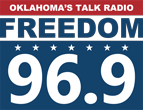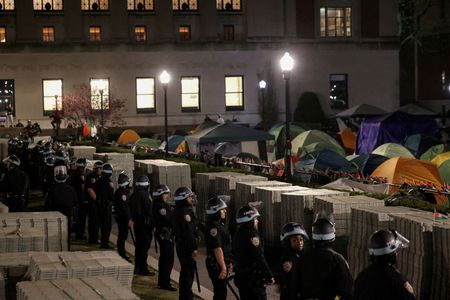By Daniel Trotta
(Reuters) – In the three tumultuous weeks since protests broke out at U.S. universities, police have descended on dozens of campuses to sweep up students in mass arrests, adhering to an approach many criminologists have found to be outdated and counterproductive.
New York police arrested nearly 300 people at Columbia University and City College of New York on April 30 during protests over the war in Gaza, setting off flash bangs to stun and disorient demonstrators. Two nights later in Los Angeles, police collared more than 200 people at UCLA.
At schools in Connecticut, Georgia, Texas, New Hampshire and elsewhere, protesters have been arrested by the dozens.
Experts on policing caution against drawing conclusions about each police intervention, saying it is too soon determine where police may have acted precipitously. That research can take years.
But an early examination of the approach to campus protests suggests police, in many cases, have yet to shed outdated ways of handling large demonstrations, they said. They added that too many departments have been slow to fully realize lessons from the 2020 racial justice protests, when police misconduct toward demonstrators resulted in several multimillion-dollar legal settlements.
“What we don’t want is a large number of low-quality arrests. We want a small number of high-quality arrests,” said Edward Maguire, a criminology professor at Arizona State University.
Reuters based this report on interviews with 10 experts in criminology, policing, civil liberties and law in addition to reviewing recent research.
Since the first mass arrests at Columbia on April 18, at least 2,600 demonstrators have been detained at more than 100 protests in 39 states and Washington, D.C., according to The Appeal, a nonprofit news organization. The charges are mainly trespassing, with some for assault of a police officer. New York has also accused suspects of criminal mischief and burglary.
Some prosecutors are dismissing cases. After police on horseback and clad in riot gear intervened at the University of Texas at Austin on April 25, Travis County prosecutors dropped charges against 57 people, citing a lack of probable cause.
Criminologists say many mass arrest cases are dismissed because police apply broad, general statements, sometimes in identical language, to large numbers of suspects. Such arrests are also prone to sweeping up bystanders or people charged with minor offenses such as trespassing.
They can also be counterproductive by escalating tensions and generating animus toward police, providing protesters with a rallying cry that fuels even more animated protests, experts said.
Colombia University, which twice called in police, did not respond to a request for comment but Columbia President Minouche Shafik said in a statement on April 18 she requested police to clear the day-old student encampment, saying they violated numerous rules, in order to ensure campus safety.
New York police did not respond to a request for comment but a press conference following the April 30 operation Police Commissioner Edward Caban said, “The situation on their campuses had deteriorated to a point where the safety of their students, faculty, staff, and the public was at risk.”
The Los Angeles Police Department referred queries to UCLA officials, who did not respond.
RETHINKING THE 2020 GEORGE FLOYD RESPONSE
Much of today’s thinking around policing of protests has been shaped by the demonstrations in 2020 following the Minneapolis police killing of George Floyd that sparked global protests against police brutality and racism.
A 2022 paper by the Washington-based Police Executive Research Forum that analyzed the 2020 law enforcement response recommended avoiding mass arrests whenever possible and called for limiting use of so-called “less-lethal” munitions such as tear gas and rubber bullets.
Moreover, it found police should engage more with protesters and prioritize establishing trust and communication before putting on a show of force by, for instance, deploying riot gear.
Another 2022 report by the National Policing Institute stressed the importance of empathetically communicating with protest leaders, using modern research on crowd psychology, and restricting the use of force to “specific individuals and groups committing criminal offenses, not entire groups of demonstrators.”
In Denver, police chief Ron Thomas told a Citizen Oversight Board he refused a campus request to clear a protest encampment for a second time on April 26 after the first raid resulted in 45 arrests.
Thomas said he would resist future attempts to break up the encampment. “I know that there is no legal way to do that, unless they truly do something that creates an unlawful assembly,” he said.
Clifford Stott, director of the Keele Policing Academic Collaboration at Britain’s Keele University, is working with police in Columbus, Ohio, on a project funded by the U.S. Justice Department to apply modern research to crowd control and protests reflected in the findings of those 2022 reports.
Stott said some police forces have incorporated the latest research, but that many are stuck in a doctrine from the 1960s and 1970s, emphasizing a display of force and dispersing crowds over mediation.
“When policing is reliant on use of force, particularly indiscriminate use of force against crowds as a whole, we see psychological change. And we see escalation emerging as a function of that psychological change,” Stott said.
As a result, protests once focused on the plight of the Palestinians took on the added dimension of demands for free speech, Stott said.
Several experts said they believe Columbia University’s decision to call in police to dismantle a student encampment on April 18, resulting in 93 arrests, fueled the increasingly contentious demonstrations at Columbia and other campuses.
Maguire said his research would test the hypothesis that Columbia’s decision escalated events elsewhere. Stott said he believed other researchers would as well, adding that it was too soon to determine if Columbia or protesters escalated confrontations.
(Reporting by Daniel Trotta; editing by Paul Thomasch)
Brought to you by www.srnnews.com







